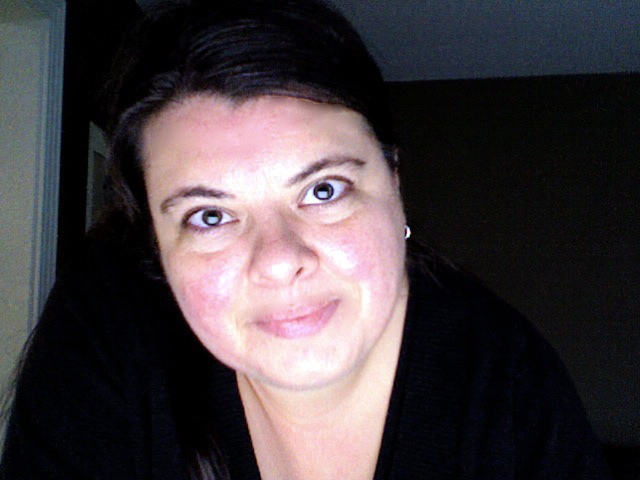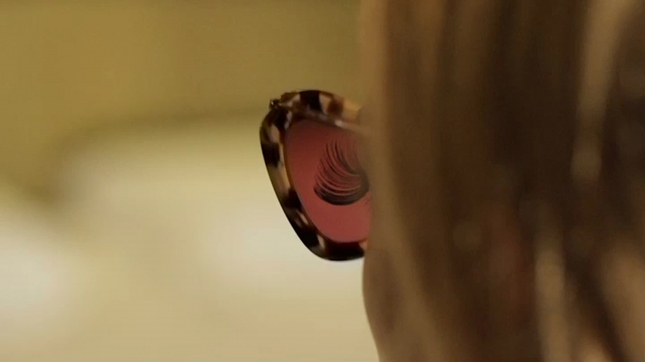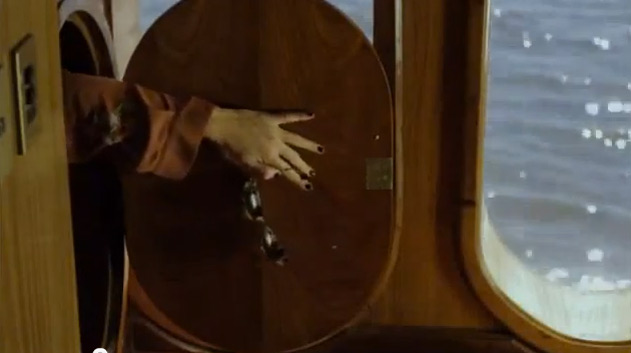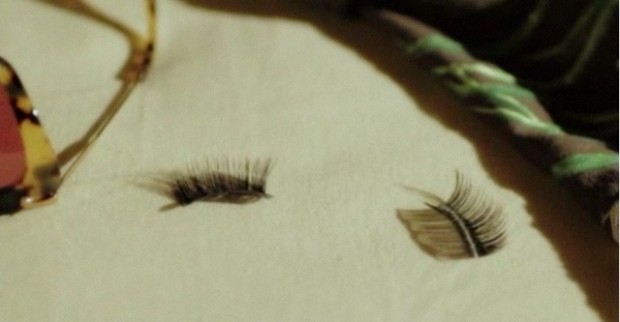Horror and fashion are interwoven in Lucrecia Martel’s “Muta,” a commercial and short film hybrid with a subtle and disturbing story that blurs the line between repulsion and beauty.
The clothing company MiuMiu commissioned the piece for a unique short film project called The Women’s Tales. It is difficult to find information on the origins of The Women’s Tales project, but it seems that the founder of MiuMiu, Miuccia Prada (yes, that Prada family), selected Lucrecia Martel for this project after a conversation. Two other younger women directors Zoe Cassavetes (USA, born in 1970) and Giada Colagrande (Italy, born in 1975) have also been selected. The films have been projected during fashion events held by MiuMiu and are being featured on the company’s website.
In her films, Lucrecia Martel likes to make her audience uneasy, thematically, visually and acoustically. In The Holy Girl, for example, her chosen story-line seeks to create discomfort, agitation, and questioning by focusing on a pedophilic predator and his relationship with an adolescent victim-turned-stalker. Martel’s visual language choices add to this uneasiness through her signature cryptic yet profound qualities. Her keen gaze focuses on details, she directs the camera with precision, and allows us the time, as viewers, to find those telling expressions, minute shapes and textures that she wants to feature in her work. Furthermore, the sounds she uses tell another conflicted and unsettling story as they often originate off-camera or don’t match the image being seen – we can’t help but be disturbed by the collision of the two contrasting senses. Wear headsets and turn up the sound to truly appreciate the subtle layers of her storytelling.
Martel’s choice of title is interesting. Perhaps in her research, Martel found out that Miuccia Prada had been a mime for the years following her PhD in political science. “Muta” means mute or voiceless in Italian: the characters in this short film do not speak in a manner that is intelligible; they don’t use a comprehensible language and the sounds they produce are not subtitled. What was that mumbling? Did I hear a word? A series of unintelligible and incoherent sounds create constant speculation for the audience. Martel uses all her artistry to create a soundscape that intrigues, often recalling sounds we rarely hear but associating them with something more familiar: the fluttering of a butterfly’s wings as we see a close-up of a long fluttering fake eyelash.
Ultimately, words would be superfluous to an understanding the story. Unlike in this year’s Best Film at the Oscars (The Artist), even facial expressions are not necessary for us to feel something and react to the film.
“Muta” borders on the genres of science fiction and horror, but both in subtle ways. The setting of Martel’s film is a strange yet familiar world where something perhaps apocalyptic has happened, recalling the mutations in the original 1958 The Fly by Kurt Neumann (remade by David Cronenburg in 1986). Has the human race in the future been hybridized through genetic mutations? Is the world inhabited by anonymous leggy creatures recalling stick insects? Regardless, the first and last shots that frame Martel’s film are of buzzing insects above water, at dawn and dusk. This busyness in the opening scenes contrasts with the stark shots that will follow but will echo the presence of the insects – something inhuman haunts the entire film.
The film is a sort of self-contained drama (used in theatre, the French term “huis clos” captures this much better) that starts with the first scene, as we discover that the setting will be an opulent ship gliding on a river (filmed on a river in Paraguay). This scene is beautifully shot, presenting an idyllic sunrise that in no way warns us of what is to happen. In Spanish and Italian, “muta” comes from the verbs to moult or to mutate, but was also used in the past as a noun to describe a pack of dogs. Indeed the characters in the story act and react like a pack.
Like cockroaches (or praying mantises, given their extra long model legs), they hatch on the boat, unfolding awkwardly, emerging from the concealed wall storage units. Martel speeds up and slows down their actions to make their emergence seem all the more uncomfortable for the models, and uncanny for the spectator.
The beings are dressed in MiuMiu’s beautiful 2011 collection, including the accessories, which are prominently displayed. This was the designer’s only constraint on Martel’s creativity –the use of her clothing collection. Their bodies, as they do strange things like eating paper, seem alien and insect-like. The mysterious hierarchy that governs them dictates that they should fumigate (or sterilize?) certain members of the pack while wearing bulky gas masks. But they also get to enjoy a party where they drink green slimy chemical cocktails. We see them react to situations with base emotions but never really understand why. With the absence of words and facial expression, we must rely on body language to understand the characters.
Martel’s work is also profound in that it captures and parodies the very essence of the fashion industry it is supposed to represent. Faceless models play the characters who only serve as functioning mannequins in a drama that eventually eliminates them from the equation: the bodies, reduced to hangers for the company’s clothes, disappear at the end of the film, leaving behind the sheaths and adornments that had served them. MiuMiu’s 2011 collection is shown off, central to the story, but eventually discarded. How fickle the fashion world!
Argentinean filmmaker Lucrecia Martel (born in 1966) is already a household name for fans of Latin American cinema. She has become the protégée of Spain’s Pedro Almodóvar and has released a dozen shorts and a trilogy of successful feature films: The Swamp (2001), The Holy Girl (2004) and The Headless Woman (2008). Martel has received awards at many festivals around the world and the last two films were nominated for the Palme d’Or at the Cannes Film Festival. The short film Muta (2011) might make her a household name in another circle, that of fashion.
— Sophie Lavoie
 Sophie M. Lavoie conducts research in the areas of women’s writing and social change in Central America and the Caribbean. Her studies focus on women in contemporary Nicaragua during the first Sandinista era (1970-1990), but she is also interested in other revolutionary movements in the area, such as Cuba and El Salvador and in women’s writing in Latin America. Her current research project focuses on the link between women’s writing, empowerment, and revolutionary action during the Sandinista era in Nicaragua. She has published articles in Canadian Women’s Studies/les cahiers de la femme, Pandora, Centroamericana, Cahiers d’Etudes Romanes and Descant. She is Associate Professor at the University of New Brunswick in Fredericton, NB where she teaches Spanish and Latin American Cinema.
Sophie M. Lavoie conducts research in the areas of women’s writing and social change in Central America and the Caribbean. Her studies focus on women in contemporary Nicaragua during the first Sandinista era (1970-1990), but she is also interested in other revolutionary movements in the area, such as Cuba and El Salvador and in women’s writing in Latin America. Her current research project focuses on the link between women’s writing, empowerment, and revolutionary action during the Sandinista era in Nicaragua. She has published articles in Canadian Women’s Studies/les cahiers de la femme, Pandora, Centroamericana, Cahiers d’Etudes Romanes and Descant. She is Associate Professor at the University of New Brunswick in Fredericton, NB where she teaches Spanish and Latin American Cinema.




Very creepy. Just from the sounds. And the sounds are interesting because they make you remember other films and the memory supplies the horrific connotation.
Thank you, Sophie, for the film and the excellent introduction. Welcome to NC.
dg
Very interesting commentary about the fashion world- fashion must be discarded to make way for the next year’s work- is fashion the most ephemeral art form?
Beautifully written piece, thank you!
I absolutely loved the use of motion in this. That fast forward into slow motion effect was just great, and really creepy.
Great insight into the use of sound as well. I really enjoyed this!